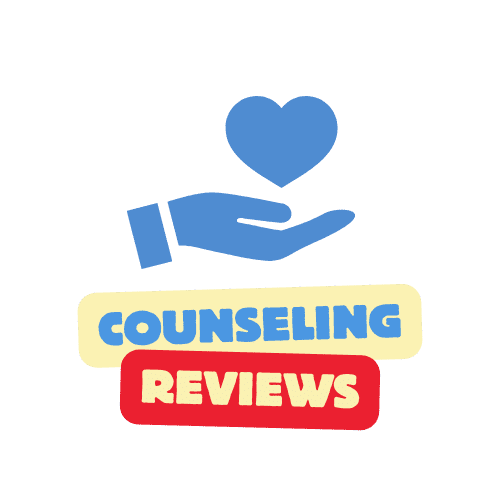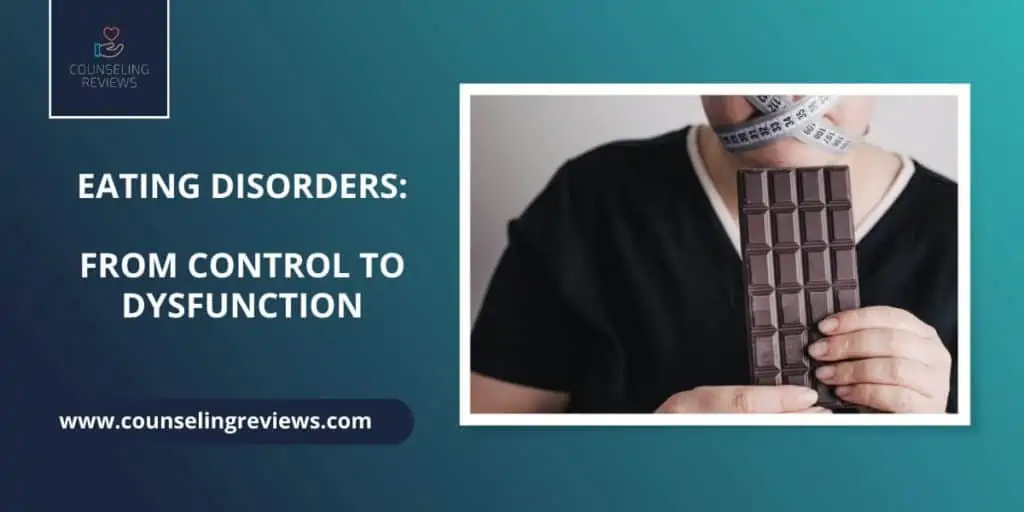Nowadays, eating disorders are very common, and even though they sound like eating problems only, the problem is far deeper and more elaborate than mere eating habits.
These conditions are types of mental issues that involve unhealthy behaviors and thoughts regarding food, and the body’s weight and shape.
People who suffer from eating disorders may worry about food so much that it can prevent them from being productive at work and good at school, and they can’t even bring themselves to enjoy their free time with their colleagues or friends.
About 5% of the population develops an eating disorder in young adulthood and adolescence.
Some eating disorders, such as bulimia nervosa and anorexia nervosa, are more common in women, but the truth is that they may occur at any gender and age.
This extensive article deals with the details revolving around eating disorders, why they occur, who they usually affect, why they are so dangerous, and the problems that can emerge from suffering from an eating disorder.
What is an Eating Disorder?
An eating disorder is a behavioral condition that involves severe unhealthy eating habits and distressing emotions and thoughts towards food.
This condition can turn into a severe problem that may affect an individual’s social, psychological, and physical functions.
Oftentimes, eating disorders come hand in hand with some psychiatric and anxiety disorders, drug and alcohol abuse problems, and obsessive-compulsive disorder.
Also, it has been noted that heritability and genes play a significant role in the elevated risk for some people to develop an eating disorder, even though some eating disorders may also affect people without a family history of eating disorders.
Eating disorder treatment addresses nutritional, behavioral, and psychological complications, but the consequences can be dire if you don’t get help and treat your problem.
Fortunately, individuals who suffer from eating disorders have a chance to resume their healthy eating habits if they get the proper care.
What Are the Symptoms of Eating Disorders?
The first step toward healing is admitting the problem.
The range of symptoms and signs of an eating disorder can help easily recognize your issue.
An individual with an eating disorder can’t have all the following signs and symptoms simultaneously, and the warning signs may also change across various eating disorders.
Here are the most common symptoms that show that you have an eating disorder:
1. Emotional and Behavioral Eating Disorder Symptoms
- Control of food, dieting, and weight loss become primary concerns;
- Obsession with fats, carbohydrates, calories, weight, dieting, and food;
- Rejection to eating certain foods, restrictions against different categories of food, such as carbohydrates or proteins;
- Feeling uncomfortable eating around other people;
- Food rituals, such as excessive chewing of each bite;
- Using extremely small portions or even skipping meals;
- New practices with food, cutting out entire food groups (no dairy, no sugar, becoming vegan/ vegetarian);
- Withdrawal from routine activities and friends;
- Frequent dieting;
- Life-threatening concern with the shape and weight of the body;
- Mood swings;
- Spending too much time in front of the mirror checking the weight-loss progress
2. Physical Symptoms
- Noticeable variations in weight;
- Stomach spasms and other non-specific abdominal complaints (acid reflux and constipation);
- Problem with focusing and concentrating;
- Menstrual irregularities;
- Inconsistent laboratory findings including low hormone and thyroid levels, anemia, a low number of red and white blood cells, and low potassium levels;
- Dizziness;
- Fainting;
- Constantly feeling cold;
- Sleep disorder;
- Dental issues, such as tooth sensitivity, cavities, and enamel erosion;
- Brittle nails, dry hair, and skin;
- Swelling around salivary glands;
- Teeth discoloration from vomiting;
- Yellow skin color in those who eat too many carrots every day;
- Muscle weakness;
- Swollen feet and cold hands and feet;
- Impaired immune functioning
What are the Types of Eating Disorders?
There are different types of eating disorders.
Depending on the characteristics and the types of symptoms, eating disorders are categorized in:
- Anorexia Nervosa;
- Bulimia Nervosa;
- BED (Binge Eating Disorder);
- ARFID (Avoidant restrictive food intake disorder);
- OSFED (Other specified feeding and eating disorder);
- Pica;
- Rumination disorder
1. Anorexia Nervosa
Anorexia nervosa includes excessive weight loss and self-starvation, so people struggling with it are too slim for their age and height.
This type of eating disorder is considered a severe illness and causes the highest mortality rate of all psychiatric diagnoses.
Individuals with anorexia nervosa practice an unhealthy dieting behavior as they are afraid of becoming fat.
Some people who suffer from anorexia claim that they try to gain weight, but they do everything to lose weight.
For instance, these people consume small portions of low-calorie foods and practice strenuous running sessions or exercise routines.
Some individuals with anorexia nervosa occasionally binge eat and purge by vomiting or using laxatives.
1.1 Subtypes of Anorexia Nervosa
According to the way people with anorexia nervosa behave around food, the disorder is further classified as:
Binge-eating/purging type: People binge eating or/and practice purging behaviors;
Restricting type: People lose weight by excessive exercising, fasting, or dieting.
Due to purging behaviors and starvation, people with anorexia nervosa can develop the following symptoms:
- Cease of the menstrual cycle;
- Dehydration-triggered fainting or dizziness;
- Brittle nails/hair;
- Intolerance to coldness;
- Reflux and heartburn in those who vomit often;
- Muscle weakness;
- Bloating, constipation, and feeling full after meals;
- Osteoporosis or osteopenia;
- Fatigue, poor concentration, anxiety, irritability, and depression;
- Heart rhythm abnormalities, seizures, and kidney problems in those who vomit or use laxatives.
The treatment for this eating disorder involves normalizing eating and restoring body weight.
The healing plan focuses on supporting patients in understanding that they need a diverse diet to stay healthy.
The nutrition plan includes an extensive array of specially selected and carefully combined food.
2. Bulimia Nervosa
People with bulimia nervosa, such as those with anorexia nervosa, are preoccupied with their looks and devote a lot of time thinking about their weight.
Bulimia nervosa makes individuals consume only low-calorie food as they believe they are “safe foods.”
They refuse to eat high-calorie products since they think they will make them fat, labeling them “forbidden foods.”
Individuals suffering from bulimia nervosa may have average weight, but they can also look slightly underweight, overweight, and in some cases, even obese.
Friends or family members may not notice that the individual has bulimia nervosa as these people don’t look skinny.
People with this condition hide their behaviors, and others can’t recognize their problems.
Some of the signs that people with bulimia nervosa might have include:
- Chronic sore throat;
- Frequent bathroom visits immediately after meals;
- Puffiness of the salivary glands located in the cheeks;
- Dental decay due to the tooth enamel erosion caused by stomach acid;
- Reflux and heartburn
- Abuse of diet pills or laxatives;
- Persistent diarrhea;
- Abuse of diuretics;
- Fainting or feeling dizzy from purging behaviors that cause dehydration
Bulimia nervosa may lead to rare complications such as gastric rupture, esophageal tears, and dangerous cardiac arrhythmias, which can be fatal.
People with severe bulimia nervosa must accept medical monitoring because it is vital to recognize and treat possible health complications.
3. Binge Eating Disorder
People with binge eating disorder (BED) consume large amounts of food in a short period and lose control when it comes to consuming food in general.
However, these people don’t use laxatives very often, and they aren’t fans of exercising or fasting, and luckily, they don’t vomit.
The binge eating disorder is chronic and results in serious health issues like obesity, cardiovascular diseases, hypertension, and diabetes.
The binge eating disorder manifests by:
- eating until feeling uncomfortably full;
- eating faster than usual;
- feeling depressed, disgusted with oneself, or very guilty afterward;
- overeating without feeling hungry;
- feeling embarrassed to eat with others.
Cognitive-behavioral psychotherapy is the most efficient treatment for binge eating disorders.
Interpersonal therapy is also effective, but the patient must admit the problem first, ask for help, follow the doctor’s instructions, and accept the support of the family and friends.
4. Other Specified Feeding and Eating Disorders
This category covers eating disorders that lead to distress and weaken the family, work, and social relationships but don’t fit the other eating disorder categories mentioned here.
That is because the rate of the behavior doesn’t match the diagnostic threshold, for example, the frequency of binges in binge or bulimia eating disorder, or it doesn’t meet the body weight standards for the diagnosis of typical anorexia nervosa disorder.
Atypical anorexia nervosa is an excellent example of other specified feeding and eating disorders.
This type of disorder is prevalent in people who have already lost too much weight.
Still, their behaviors and level of fear of obesity are consistent, just as with anorexia nervosa.
Still, they aren’t diagnosed as underweight since their baseline weight is above average.
People with this disorder must be cautious as the fast weight loss may result in some serious medical complications.
Even though individuals with atypical anorexia nervosa are of average or above-average weight, they need to accept help and start practicing a healthy way of life.
5. Avoidant Restrictive Food Intake Disorder
ARFID describes an eating disorder related to a disturbance in consuming food that results in picky eating and the inability to meet nutritional needs.
In ARFID, limited or avoiding food practices can be caused by one of the following issues:
- Lack of interest in food or eating;
- Low appetite;
- Food avoidance according to the physical characteristics of the food on the table, e.g., color, appearance, smell, and texture;
- Anxiety or fear about eating consequences, including fear of choking, allergic reaction, constipation, vomiting, and nausea.
People can get ARFID in response to a significant adverse eating event like choking or food poisoning.
To diagnose ARFID, doctors need to follow the patient’s difficulties with consuming food associated with:
- Significant nutrition deficiency;
- Substantial weight loss;
- Problems reaching expected weight (in children);
- Problems with social functioning, including an inability to eat with other people.
It the necessity to take oral supplements or a feeding tube to maintain enough nutrition intake.
5.1. Why is It Different Than Other Eating Disorders?
The starvation period and psychological and physical health impact might be the same as that in individuals who suffer from anorexia nervosa.
Still, patients with ARFID don’t worry too much about the shape and weight of their body, so the ARFID is quite different from bulimia nervosa and anorexia nervosa.
People with autism spectrum disorder also have severe eating behavior sometimes, but it doesn’t lead to ARFID.
Avoidant/restrictive food intake disorder doesn’t include specific food restrictions linked to regular dieting, cultural practices, like religious fasting, or normal eating behaviors in kids who don’t like to eat regularly.
Food restriction or avoidance usually develops in infancy, childhood, and adulthood.
Depending on the affected individual, this disorder may drive profound changes in families because it increases the stress during mealtimes and can prevent them from eating outside their homes as they avoid social events that include eating.
To treat ARFID, people may need to get in touch with several specialists.
Following an individualized plan by a licensed dietitian or nutritionist can be very useful, but the help of a mental health professional is crucial for the healing process, too.
6. Pica
People with pica eat products that lack a nutrition value and aren’t even categorized as foods.
If this behavior carries on for more than a month and becomes severe, people need to ask for help.
The type of substances that people with pica usually ingest may vary with gender, age, and the availability of the products.
The most common substance people with the pica eating disorder consume includes clay, coal or charcoal, pebbles, metal, string, hair, cloth, chalk, soap, paint chips, and paper.
These people don’t usually hate or avoid food in general.
The unusual behavior of people with pica isn’t a part of any cultural practice; this eating disorder typically occurs during childhood, but it can also develop in puberty or adulthood.
Putting small items in the mouth isn’t unusual behavior for toddlers, but if it continues in the future, it can be a sign of the pica eating disorder.
An individual diagnosed with a pica eating disorder has an increased risk of facing potential toxic outcomes and intestinal blockage due to the consumed substances.
Specialists do nutrition deficiencies tests in pica patients to address the problem and find the best treatment.
Behavior interventions for treating pica eating disorder can motivate individuals to avoid or stop consuming nonfood products using a reward system.
7. Rumination Disorder
Rumination disorder is a type of eating disorder that involves frequent regurgitation and food re-chewing after eating.
People with this condition bring back the swallowed food in their mouth and re-chew or spit it out.
Individuals at any age can develop rumination disorder, and it can occur as early as infancy and in puberty or adulthood.
Some of the symptoms that can manifest a rumination disorder include:
- Repetitive behavior – occurring for more than a month;
- It is not a result of other medical or gastrointestinal issues;
- It doesn’t match any other behavioral eating disorders described above
The rumination disorder can also be associated with mental disorders, such as intellectual disability.
Still, rumination symptoms must be severe enough to call for clinical attention and particular examination.
What Causes Eating Disorders?
Eating disorders are a result of a combination of unpleasant events, pressures, factors, and feelings.
Individuals may express their frustrations via new eating habits that are often unhealthy.
People who suffer from eating disorders often have low self-esteem, lack of confidence, misunderstandings and troubles with family and friends, problems at work, at school, and concerns about sexuality, among other segments.
Traumatic events, such as divorce, abuse, bullying, and grief may also trigger eating disorders.
People with disability and long-term illnesses, including hearing loss, depression, and diabetes, can also suffer from eating difficulties.
Prevention From Developing an Eating Disorder
There isn’t a formula that guarantees a 100% prevention of eating disorders, but there are some tips that may help your teens stay on the safe side:
Promote a balanced diet: Don’t tell your teen about your dieting – family eating habits have an enormous impact on the kids and their relationship with the food.
If you eat your meal in the company of your children, you have a chance to teach your youngsters about the dangers of dieting while motivating them to eat a balanced diet in rational portions.
Talk to your children. Tons of websites encourage people to follow risky ideas, like understanding anorexia as a modern lifestyle rather than a dangerous eating disorder.
You should talk to your children about this and correct these types of misperceptions.
Avoid criticizing other people: Never say bad things about overweight or skinny people.
Teach your children that physical appearance isn’t so important and that they should accept their height and weight.
Talk to your child’s doctor: Doctors can identify the first signs of an eating disorder, so taking your children to their doctor or regular checkup is vital.
These visits often include weight and height checks and discussions about your children’s eating habits.
How are Eating Disorders Diagnosed?
Most people who struggle with an eating disorder refuse to admit that they have a problem or keep it secret.
The first step is recognizing the problem and visiting a doctor for a conversation.
Mental health professionals are trained to help patients with eating disorders and will ask questions or conclude a diagnosis based on the patient’s symptoms and signs.
There isn’t a standard test that doctors use to determine if someone suffers from an eating disorder.
Still, fortunately, various evaluations can help them assemble a diagnosis, such as:
Psychological evaluations: A mental health professional or doctor talks to the patients about their eating habits and how they perceive their body image.
Doctors also focus on the patients’ lifestyles, behaviors, and beliefs.
Specially designed questionnaires give mental health professionals a complete insight into the individual’s eating-related practices.
Physical examinations: Eating disorders may take a toll on the body, which is why doctors first check whether the patient is physically sound.
Physical examinations usually include a height and weight check, and vital signs check (temperature, lung function, blood pressure, and heart rate).
Specialists can ask patients to do urine and bloodwork, too.
How Can Online Therapy Help You Treat Eating Disorders?
Eating disorders often turn into serious problems, so the treatment should start as soon as possible.
Those who ask for help when they recognize their condition come to achieve more significant results in a short period of time.
Those who initially avoid accepting the truth and ask for help when their eating disorder becomes chronic may experience long-term health consequences.
Each person is unique, and the treatment for eating disorders is different for everyone.
A team of doctors, dietitians, and psychologists often work together to provide the best treatment for a particular patient struggling with an eating disorder.
Some of the options for treating eating disorders include:
1. Nutrition education
A dietitian may help an individual suffering from an eating disorder by providing healthy eating habits, advice, support, and proper education to return to average body weight.
Nutrition education is crucial for people suffering from anorexia nervosa, and these people must learn all about nutrition, healthy eating habits, meal planning, and techniques to avoid extreme dieting.
2. Counseling
Counseling is great for treating eating disorders. Counselors utilize different techniques to help people with eating disorders.
CBT (Cognitive Behavioral Therapy) is the most common method for treating eating disorders. It allows patients to identify behaviors, feelings, and thoughts related to their type of eating disorder.
3. Family Approach
The family approach is practical, especially when young patients are treated for eating disorders.
The family understands how to take care of the family member suffering from an eating disorder.
4. Medication
Although there aren’t any medications for treating eating disorders, a medical health specialist can sometimes prescribe certain medicines for people with an eating disorder, but only to treat some of the symptoms.
Since people with eating disorders feel disappointed by their physical appearance, they can quickly become anxious and depressed, and antidepressants may help them deal with those symptoms.
5. Person-centred Stepped Care
Person-centred, also known as ‘stepped care,’ is an excellent treatment to fit an individual’s situation, illness, and requirements.
Stepped care recognizes that individuals with eating disorders move ‘up and down’ via different levels of care during their condition.
6. Online Eating Disorder Therapy
People with eating disorders who live in distant areas find it hard to get in touch with professionals to help them treat their eating disorders, including binge eating disorder, bulimia nervosa, and anorexia nervosa.
For these people, doing traditional face-to-face therapy is mission impossible, and they have to cope with long waiting periods to get treatment.
Luckily, today there is an excellent online therapy option that can put an end to the long drive to the doctors and specialists and the lack of professional care during the weekends.
Thanks to online therapy, people with eating disorders who live in isolated areas or refuse to leave the house because they don’t “feel good in their skin” can receive adequate professional care.
Advantages of Using Online Therapy
Online therapy comes hand in hand with many advantages, such as:
1. Scheduling: It is easier to meet with a health care professional online as you don’t have to spend extra time driving to the doctor’s office, and there is no need to wait to schedule a meeting with them.
People will also cut the time they spend in waiting rooms.
2. Convenience: Online therapy services are convenient, as patients have the option to meet their health providers from the comfort of their homes, offices, or any other place where they can close the door and enjoy privacy.
3. More connection: In case patients prefer or accept to be a part of an eating disorder online support group, they can find tons of ways to connect via phone calls or messages.
4. Less anxiety: People with eating disorders find it less nerve-wracking to talk with a professional via video while sitting comfortably in their offices or homes than to drive to a clinic and become fed up with all the waiting and uncomfortable small-talk in the waiting room.
No matter which type of professional care the patient opts for, the good news is that thanks to the proper emotional, social, and professional support, an individual with an eating disorder has a chance to recover fully.
The Bottom Line
Today’s fast-paced society is somewhat rendered eating disorders to become more common, especially with social media and society promoting skinny people.
Even though eating disorders don’t sound like a life-threatening peril, they can often lead to severe health conditions if left untreated for an extended period.
Often, these conditions result from another health problem, which helps health professionals put together a proper diagnosis quickly.
Although there isn’t a single eating disorder definition, rather many, the good news is that all of them can be treated.
Those who accept their problem and ask for help can fully recover.
People with eating disorders can choose whether they prefer online therapy or counseling.
Still, as soon as they are willing to follow the professional advice from the health specialists and help themselves, they will always come out as the winners of the battle of their lifetime.




